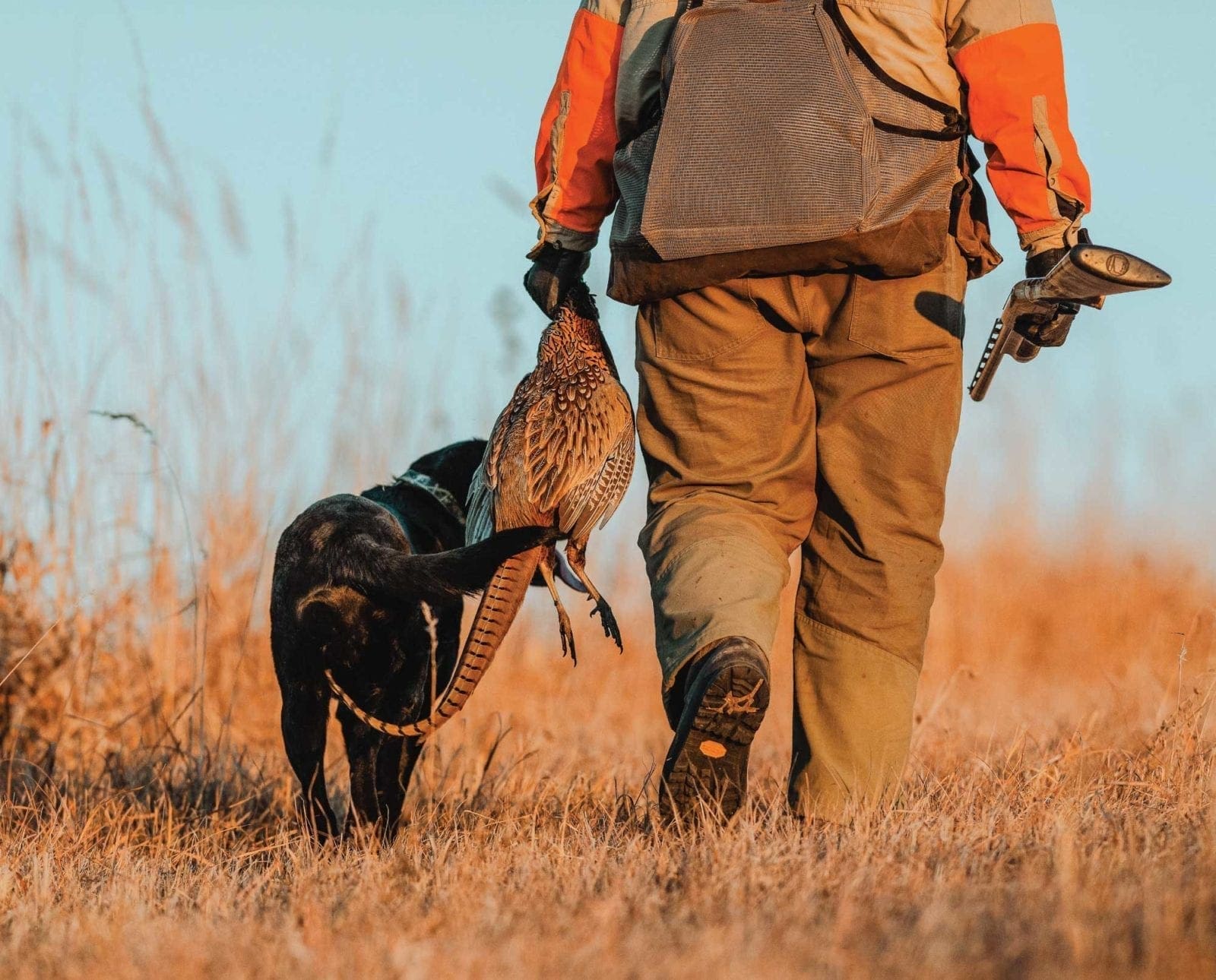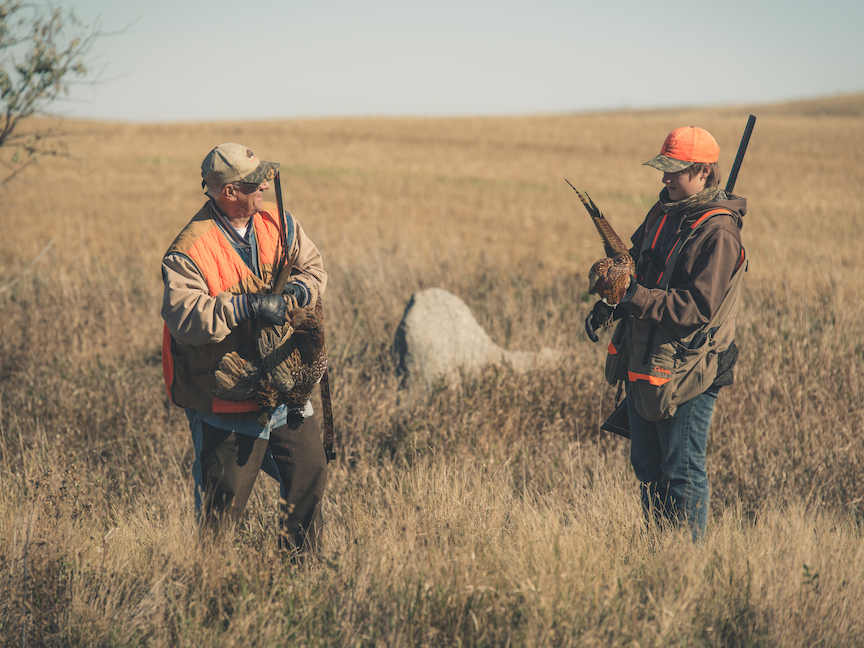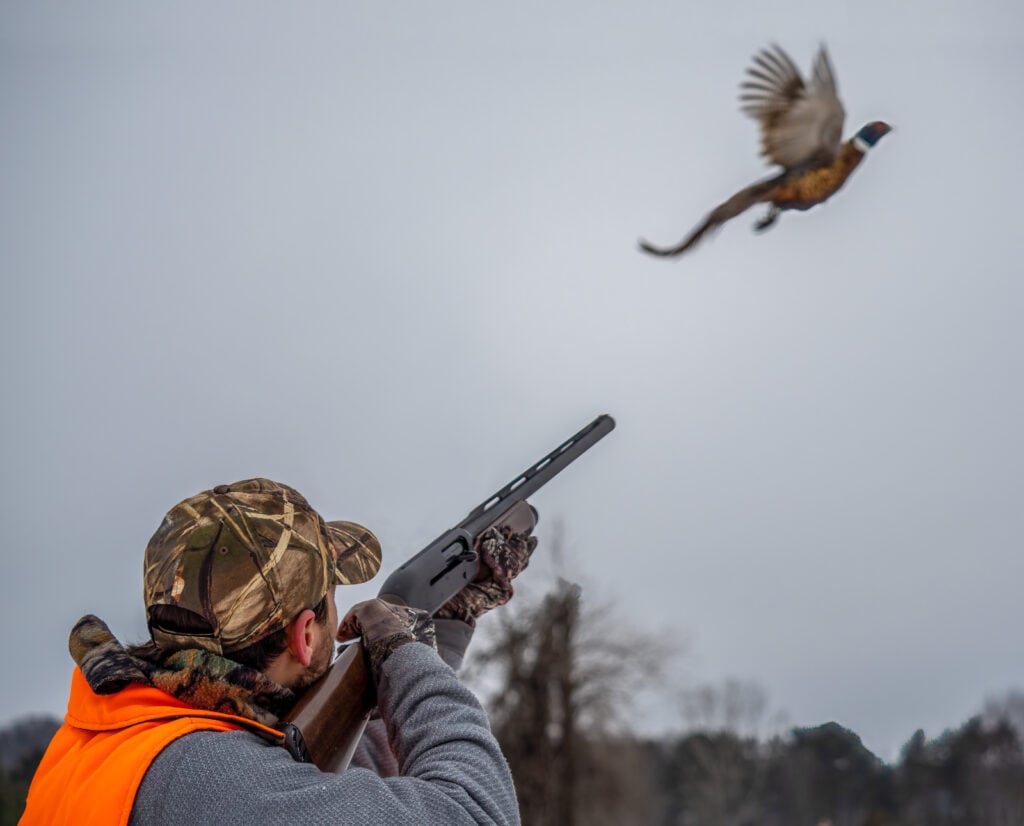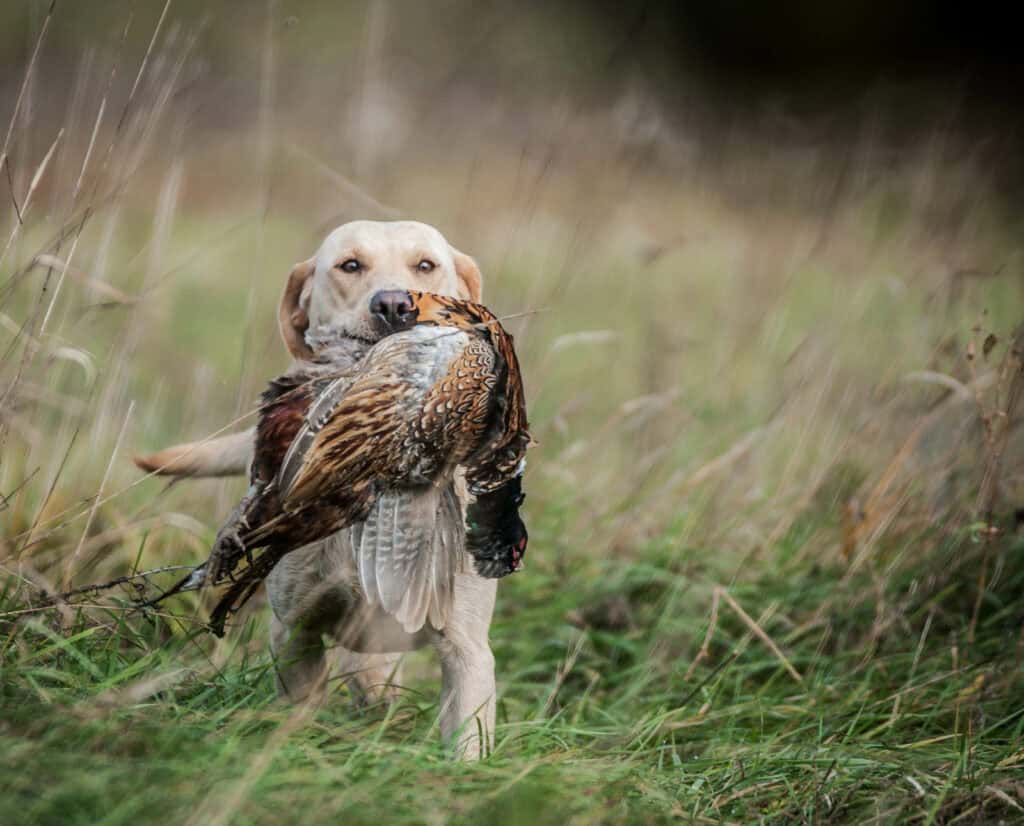Home » Pheasant Hunting » A Guide to Wild Pheasant Hunting in North America
A Guide to Wild Pheasant Hunting in North America

Frank Loncarich has been a wildlife biologist for over 20…
Learn how to hunt pheasants by identifying their habitat, understanding their behavior, and understanding tried-and-true hunting strategies.
Despite being exotic to North America, the ring-necked pheasant has supplanted our native gamebirds as the most popular species to hunt among the upland hunting populace. Pheasants are abundant, meaty, found over a large range, and just so darn charismatic. Even the most ardent quail or grouse lover must admit few birds can match the beauty and sheer excitement at the flush of a wild rooster. Add in their incredible craftiness and ability to outwit the most seasoned bird hunter time and again, and it’s no wonder why pheasants have captured the imagination of bird hunters in a way no other species has.
Listen to more articles on Apple | Google | Spotify | Audible
While there are plenty of opportunities across much of the Midwest to chase ringnecks, there is much to consider before taking off on a hunt. Let’s closely examine some of these considerations that will boost your odds of success this fall and help turn around a potentially disappointing season.

Where To Hunt Pheasants
Wild ringnecks are found in many locations, primarily in the Midwest and northern tier of states from Wisconsin west. However, the Dakotas, particularly South Dakota, are the standard bearers of the pheasant world. When the official state quarter of South Dakota has a ringneck on it, you know it’s serious business.
Many first-time pheasant hunters flock to the Dakotas every year to try their luck, and with good reason. Plenty of great pheasant habitat leads to loads of birds during good weather years. Conversely, access, especially early in the season, can be tough. While each state has a decent amount of public land and thriving private-land access programs, hunting pressure is high. It is difficult to gain permission to hunt on much of the private land that is not enrolled in a public access program. These states still offer traveling hunters great opportunities to harvest birds if they are willing to hunt hard and delay their trip to avoid the opener.
An added benefit of going later in the fall is that most of the crops have been harvested, drastically reducing the amount of usable space in which birds can be found. This forces birds to bunch up in more limited areas. A trip to one of the Dakotas should be at the top of any pheasant hunter’s shortlist.
Kansas is another popular state for pheasant hunting. It, too, has a very good private-land access program and a fair amount of public land, especially around US Army Corp of Engineers reservoirs. Lands surrounding these reservoirs are often open to the public and managed by the Kansas Department of Wildlife and Parks to provide quality upland game bird habitat.
A key here is to look for access points that take you to habitat far from roads. These spots get less hunting pressure, and even small chunks of good habitat, as long as they are away from easy access, hold birds. See this article written by my buddy Kyle Hedges for tips on finding these out-of-the-way hot spots.
Iowa was historically a top pheasant state but fell off several years ago. However, it has made a strong resurgence in the recent years. Programs to increase the acres of native grasses on the landscape have helped nest success. As a result, production and harvest numbers have rebounded. Minnesota also has some very good pheasant hunting in the southern tier of counties where prairie once flourished. Western Nebraska should not be overlooked, either. Further north, Montana has good bird numbers in the eastern and north-central portion of the state. The population has been good in recent years, and Montana has several other species that can be harvested during a pheasant hunting trip.

How to Hunt Pheasants
Though not considered a grassland obligate species, ringneck pheasants have adapted well to the Great Plains grasslands. As a result, large grassland tracts, preferably native grasses, are preferred habitat. Fields with grass between knee and thigh high, especially if they have thick, weedy cover patches, offer protection from wild predators and are preferred overgrazed pastures or hayfields.
Ringnecks are also heavily reliant on grain from agricultural operations for food. One will occasionally find birds away from grain fields, especially in the western portions of their range. However, hunting grassland habitat that does not have some sort of grain field within ¼ miles is usually a waste of time.
A rooster’s typical day starts by walking or flying from its grassland roosting habitat to nearby grainfields to feed. When hunting first thing in the morning, it is wise to hunt the edges of these grassy fields and intercept birds moving from the center of the fields headed to grain. Also, walking cut corn or grain sorghum fields can yield good success. In warm weather, birds stay in these fields all day if not pressured. They can be hunted anytime.
From mid-morning till mid-afternoon, birds often migrate back to heavier cover to loaf and digest their meal. This heavy cover includes the grass mentioned earlier but also includes thick cattail sloughs, weedy abandoned farmsteads, and other isolated patches of dense cover. Cattail sloughs are especially utilized in harsh winter weather when the water is frozen and the snow is deep. Anytime you have a chance to hunt a cattail slough, don’t pass it up. Hunt these loafing sites for the remainder of the day, shifting closer to the edges again by late afternoon as birds head back out to the grain fields to feed. This pattern of eat-loaf-eat is fairly predictable, but it can be interrupted by heavy hunting pressure early in the season. The best advice, and this goes for most gamebird hunting, is to focus your efforts on quality protective cover near food sources.
Another key habitat component, primarily in the northern tier of states, are woody hedgerows or shelterbelts. These long rows of trees have been commonly planted in the north to mitigate the effects of lots of snow and fierce winter winds. They are also excellent protective cover for pheasants because they provide protection from wind and exposed ground post-snow, a place pheasants prefer to scratch for food. Look for well-developed shelterbelts with several rows of trees closely planted and thick cover between 3-12 feet tall between the rows. As shelterbelts age, they lose their thickness and cover in the preferred range. Belts that are nearly impossible for humans to penetrate but dogs can root through are ideal.

Shotguns, Shot Sizes, And Shooting Strategies For Pheasant Hunting
A mature ring-neck rooster is one tough cookie. It is armored with a heavy coat of feathers that seem to eat bird shot, so heavy loads and larger gauges are preferred. I know of folks who use a 28 gauge and do well, but it’s time to get serious when the snow flies and birds are educated. The go-to gun for most experienced pheasant hunters is a 12 gauge. The added shot capacity and extended range of a 12 are hard to beat.
When it comes to shot size, I like to use #6 size shot early in the season when birds tend to flush closer to the gun. I shift to #5 or even number #4 shot in January when birds are jumpy.
Shotshell technologies improve every year, and new shot compositions deliver a heavier shock to the bird than traditional lead shot. This has resulted in some folks using light loads made of these new composites all season for the advantage of more shot capacity, which puts 20 gauges in the game throughout the entire season. This can be very helpful for youngsters. Of course, the venerable 16 gauge still works its magic; I witnessed it last year in North Dakota. The birds didn’t know what hit them when the 16 barked.
Pheasants are not a hard target to hit. However, they’re easy to shoot poorly. Their long tail often causes hunters to shoot them in the middle of the body on a swinging shot or low in the rear on a straight shot. There are no vital organs on the tail, so try to focus on the white ring on the neck and remember to swing up on a straight shot to ensure a solid hit to the front of the body.
It’s always very important to mark downed birds accurately. Quickly get a dog on the ones that appear to go down soft.

Hunting Pheasants With A Dog
Speaking of dogs, pheasant hunting and bird dogs go hand in hand. However, while most upland game species are hunted predominately with pointing dogs, most hardcore pheasant chasers use flushing breeds. That was made abundantly clear in North Dakota as every Suburban I saw at the café, hotel, or pulling into a field had one or two Labradors in the back seat.
Labs and other flushing breeds are ideal for pheasants because roosters hold for points far less frequently than quail, Huns, or early-season prairie grouse hunting. Flushers will bust through the thickest grass or cattail sloughs, trail up crippled birds, and, of course, retrieve with excellence.
For guys like me who must have a pointing dog in the kennel, all is not lost. Pheasant hunting with a pointing breed requires that the dog obeys well, hunts close, and follows up a downed bird till the end. The best string of pheasant dogs I ever owned was a run of Brittanys that met all those qualifications. More times than I can remember, I would follow closely behind these dogs as they trailed a running bird. This often took me on a different path than the rest of the group with whom I was hunting, sometimes even back the way we came. But, when the dog finally did lock up, the flush was close. The satisfaction of getting that bird was much higher than one jumped randomly.
Continue Your Pheasant Hunting Education
This article is just a primer on pheasant hunting and is certainly not comprehensive. Hundreds of books and thousands of articles have been written about pheasants and the nuances involved in becoming a good ringneck hunter. You can read our extensive list of pheasant hunting articles here at Project Upland. Read as much as you can stand, then plan a trip to the heartland. You will be humbled many times, but when you eventually connect on a bird, the feeling is so sweet. It won’t be your only trip, I assure you.
Once you get a taste for wild ringnecks in classic bird habitat, you will go back again, and again, and…
Frank Loncarich has been a wildlife biologist for over 20 years, specializing in bobwhite and grassland management. He is also a Habitat Consultant for Land and Legacy.



